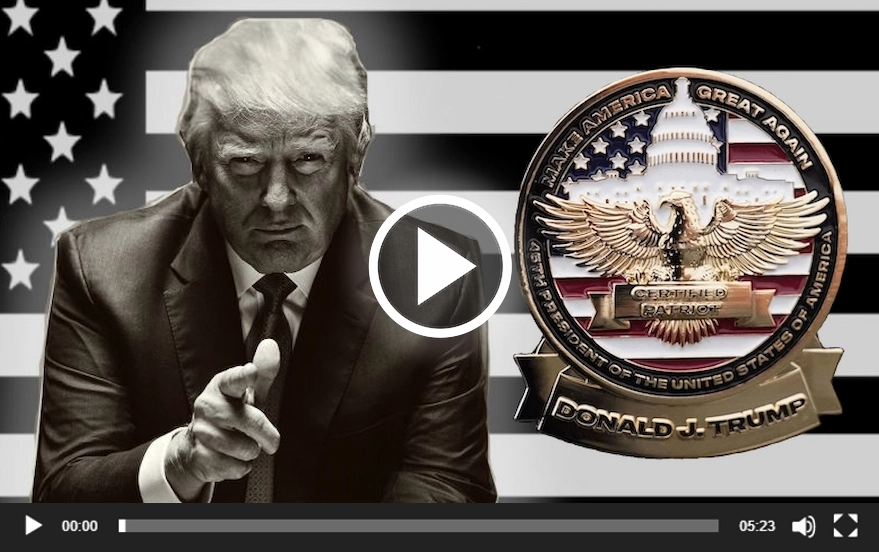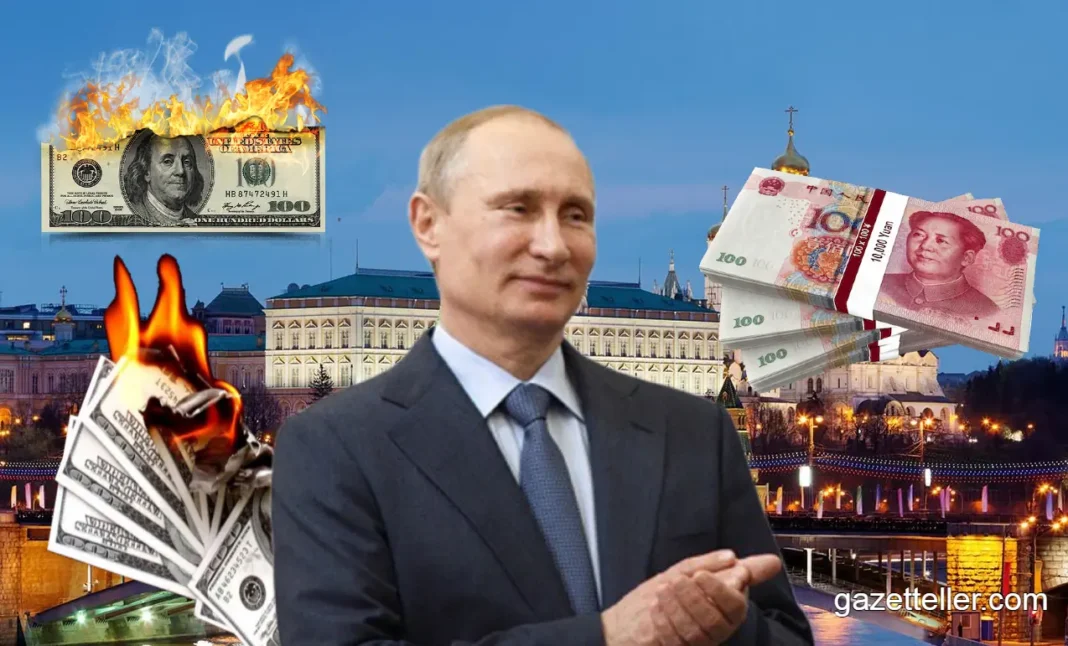Are we witnessing the crumbling of an era? Behold the fierce tectonic shift in international finance as the Bear of the East sidles away from the Almighty Dollar, reaching instead into the maw of the Red Dragon. Russia, spurred by relentless Western sanctions, bids farewell to the dominance of the U.S. dollar, now embracing the Chinese yuan with the eagerness of a long-lost comrade.
After years of quietly gnawing at the dollar leash, Russia’s acceleration towards financial emancipation has been shockingly swift in the wake of the Ukraine proxy war. In one short year, the once insignificant yuan has risen from the ashes, gaining the favor of Moscow’s currency traders, its share surging from a meager 1% to a staggering 40-45%. Contrastingly, the dollar trade plunged from a commanding 80% to a dwindling 40% – a shift as dramatic as a Shakespearian tragedy!
The Western bloc, with its sanctions and financial barriers, unwittingly unleashed the Russian bear from its dollar den. The mighty SWIFT inter-bank messaging system, an artery in the international financial body, saw its Russian banks severed. A bewildering $300 billion of Russian foreign exchange reserves, frozen by Washington and Brussels, was the final blow, prompting Russia to explore an alternative narrative.
Anonymous whispers echo through the grand hallways of Russia’s financial circles. “The central bank can now buy yuan“, they confide. Another confides, “We have a lot of friendly currencies. On the exchange, the Chinese yuan is the friendliest so far.”
Is this the covert affirmation of an allegiance shift?
Or just pragmatic adaptation in a world hostile to the Russian economy?
Witness, as the Russian market pulsates with renminbi – the world’s fourth-biggest offshore trading center for the yuan. A surge of such magnitude that this time last year, Russia didn’t even rank among the top 15! Consider this: “yuan-rouble trading volumes on the Moscow Exchange are already exceeding dollar-rouble trades on some days,” a trend predicted to intensify in the upcoming year.
The oil and gas industry – the lifeblood of Russia’s economy – has already rung the death knell for the petrodollar. Importers are now forced to pay with the ruble, a subtle but potent blow. In 2022, “Russia’s financial shift eastwards could boost cross-border commerce, present a growing economic counterweight to the dollar and limit Western efforts to pressure Moscow by economic means,” the media warns.

The International Monetary Fund (IMF) itself raises an alarm bell, speaking of an “erosion of dollar dominance.” From the zenith of 70% in 2000, the dollar’s stronghold in global reserves has slumped to under 60% by 2021. As the Chinese yuan inches up, one must wonder if the age-old reign of the dollar is gradually fading into a dusk of obscurity.
Even the U.S.’s staunch allies are cautiously sniffing at the air of change. India, Egypt, Saudi Arabia – they’re all exploring new financial systems for regional trade. An alternative narrative, where the dollar isn’t the reigning monarch.
The recent diplomatic rendezvous between Russia’s President Putin and Iran’s Supreme Leader Ali Khamenei further tilts the scales. A $40 billion energy cooperation agreement was signed, promising deeper economic integration. An echoing call was made, a challenge to the U.S. dollar’s reign, and a proposal for the use of local currencies for trade.
It’s a seismic shift of a magnitude rarely witnessed, a plot worthy of a gripping political thriller. As we gaze at this rapidly unfoldingfinancial panorama, it’s almost as if we’re watching the shadows of a new world order dancing on the wall. We’re seeing how sanctions can serve as a catalyst, fostering a sense of urgency for countries to rethink their monetary reliance and seek out ‘friendlier currencies.’
Must See –> Unlock the ex-CIA scientist’s secret to activate your ‘Third Eye’ and manifest quick riches!
Don’t be deceived, this isn’t merely a story of a single country’s strategic currency shift. This is the narrative of an economic paradigm shift, threatening to disrupt the current financial order, shaking the foundations of global commerce and diplomacy. It’s the chronicle of a world where the redback challenges the greenback, a world where countries re-evaluate their alliance with the dominant dollar.
What we’re witnessing isn’t just Russia’s de-dollarization, but a potential wave of global de-dollarization. The rapid pivot to the yuan in Russia isn’t just a Russian response but a harbinger of what could be a broader global move.
The whispers are getting louder, the moves bolder, the alliances more clear.
So, keep your eyes on the East, where the dawn of the yuan era is breaking.
As nations reconsider their currency alliances, it’s a clear signal that the tides of global finance are changing.
The ripples are felt worldwide, reaching even the staunchest of dollar-defending shores.
But will this tide turn into a tsunami, and will the dominance of the petrodollar era finally be washed away?
Only time will tell.
But for now, fasten your seat belts, it’s going to be a dramatic, conspiracist, and aggressive ride.





